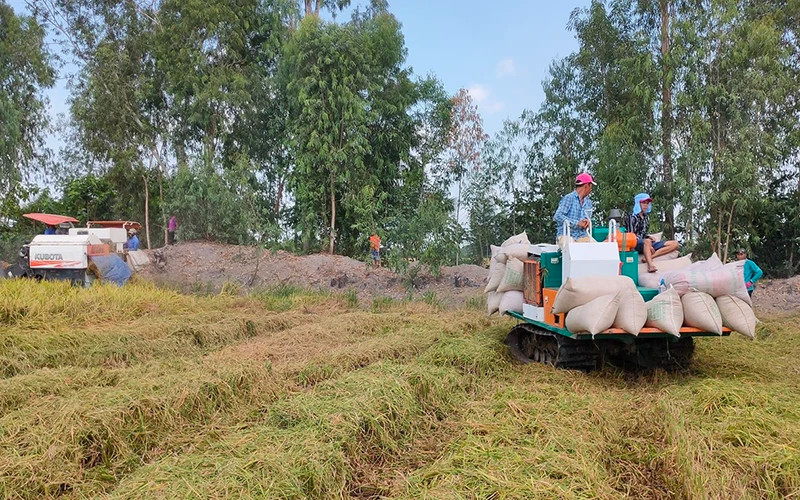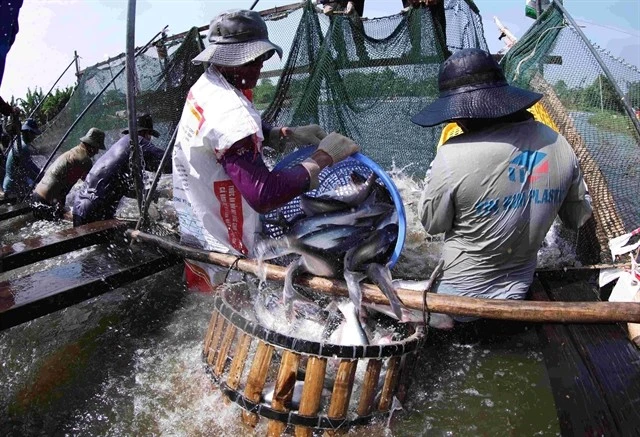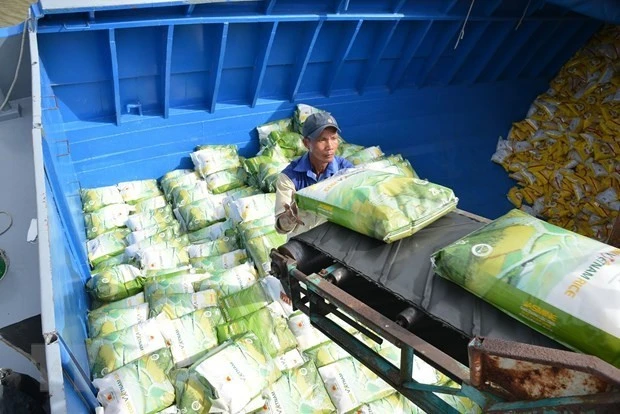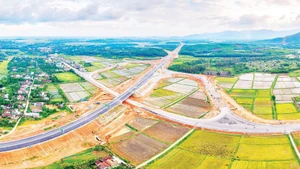Previously, on July 20, 2023, the Directorate General of Foreign Trade of India issued a notice banning the export of all types of regular white rice due to concerns about a shortage of rice supply and high domestic food prices.
Market fluctuations
According to the Vietnam Food Association (VFA), the current export price of 5% broken rice from Vietnam is 557 USD/tonne, 17 USD/tonne higher than that of Thailand and 40 USD/tonne higher than that of Pakistan. Immediately after lifting the ban on non-basmati rice exports, India re-entered exporting 5% broken rice at 491 USD/tonne. India's return to the race stems from increased domestic rice reserves and supply.
VFA said that as of September 23, 2024, the Kharif rice area (June to September) in India for the 2023-2024 crop year had reached 41.35 million hectares, up about 2.97% from the estimated 40.155 million hectares in 2023. The Kharif crop area reached 110.046 million hectares, up slightly by about 0.8% over the same period last year.
In the Government of India's estimate report on food grain production for the crop year from July 2023 to June 2024, the total milled rice output is estimated to reach a record 137.83 million tonnes, up about 2% from the estimated 135.76 million tonnes in the 2022-2023 crop year.
India's new decision will significantly impact the global rice market because it is the leading rice exporting country, accounting for more than 40% of the world's total export output. Therefore, when India banned non-basmati rice exports in July 2023, global rice prices increased sharply.
At that time, importing countries sought more rice supplies from Vietnam, Thailand, etc. This led to the price of Vietnamese rice always being high, many times reaching the highest level in the world, exceeding 650 USD/tonne.
According to the Chairman of the Board of Directors of Trung An High-Tech Agriculture Joint Stock Company Pham Thai Binh, India's lifting of the rice export ban may create fluctuations in the world rice market. Vietnam will not be greatly affected because India's issuance or lifting of the rice export ban is largely due to the country considering conditions on crop output and domestic food security (because India's population is massive, about 1.4 billion people).
On the other hand, India’s rice export structure is also different from Vietnam's, so the market segments are also different. Most of Vietnam’s rice markets will not be affected when India's regular white rice reappears.
Exports will continue to grow
Statistics showed that in the first nine months of 2024, Vietnam exported about 7 million tonnes of rice, with a revenue of more than 4.3 billion USD, and it is expected that the whole year of 2024 will exceed 5 billion USD. Many export enterprises believe that this goal is completely achievable because, up to now, Vietnam's rice export parameters are still quite stable.
Deputy Director of Phuoc Thanh II Company LimitedNguyen Tuan Khoa said: Currently, the amount of summer-autumn rice in the Mekong Delta provinces has been harvested and purchased, the localities are planting the autumn-winter crop, so the rice purchase price of farmers is not affected by the removal of the ban on rice exports by India.
For export enterprises, many contracts from now until the end of the year have been signed with customers at fixed prices, without fluctuations related to market fluctuations. Meanwhile, the demand for rice imports from traditional markets such as the Philippines and Indonesia is still very high, which is a condition for Vietnam to boost exports.
Vietnamese rice still dominates the Metro Manila area and the southern provinces of the Philippines due to its delicious taste and reasonable price. Meanwhile, Indonesia continues to be Vietnam's second largest rice export market, from now until the end of the year, Vietnam's rice exports to this country will increase as the government of this country has decided to import rice in large quantities to cope with lower domestic rice output in the context of drought caused by El Nino.
As for domestic rice, supply is still stable, ensuring domestic consumption demand and serving exports. As of the end of September 2024, according to data from the Department of Crop Production, provinces and cities in the Mekong Delta region, the 2024 summer-autumn crop has harvested 1.362 million hectares with a yield of nearly 6 tonnes/ha, the output reaching more than 8.1 million tonnes of rice. The 2024 autumn-winter crop has planted 675,000 hectares out of the planned 700,000 hectares and has begun harvesting 88,000 hectares.
However, with the rapid changes in the global rice market, especially when major exporting countries such as India adjust their policies, Vietnamese enterprises also need to regularly update information to have a comprehensive view and flexibly adjust rice export purchasing activities, ensuring the harmony of interests for rice growers, exporting enterprises and contributing to the completion of the country's rice export target.
















